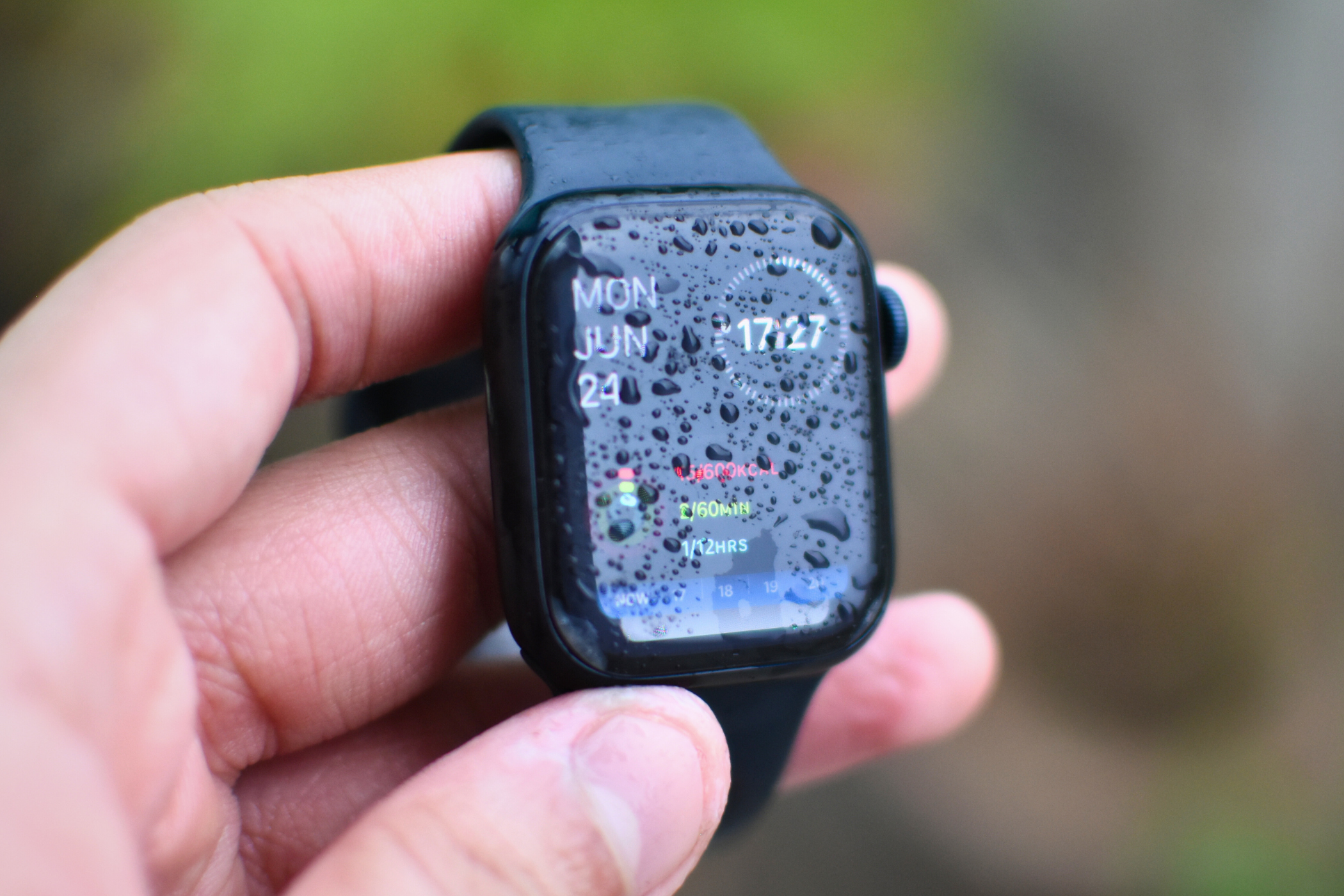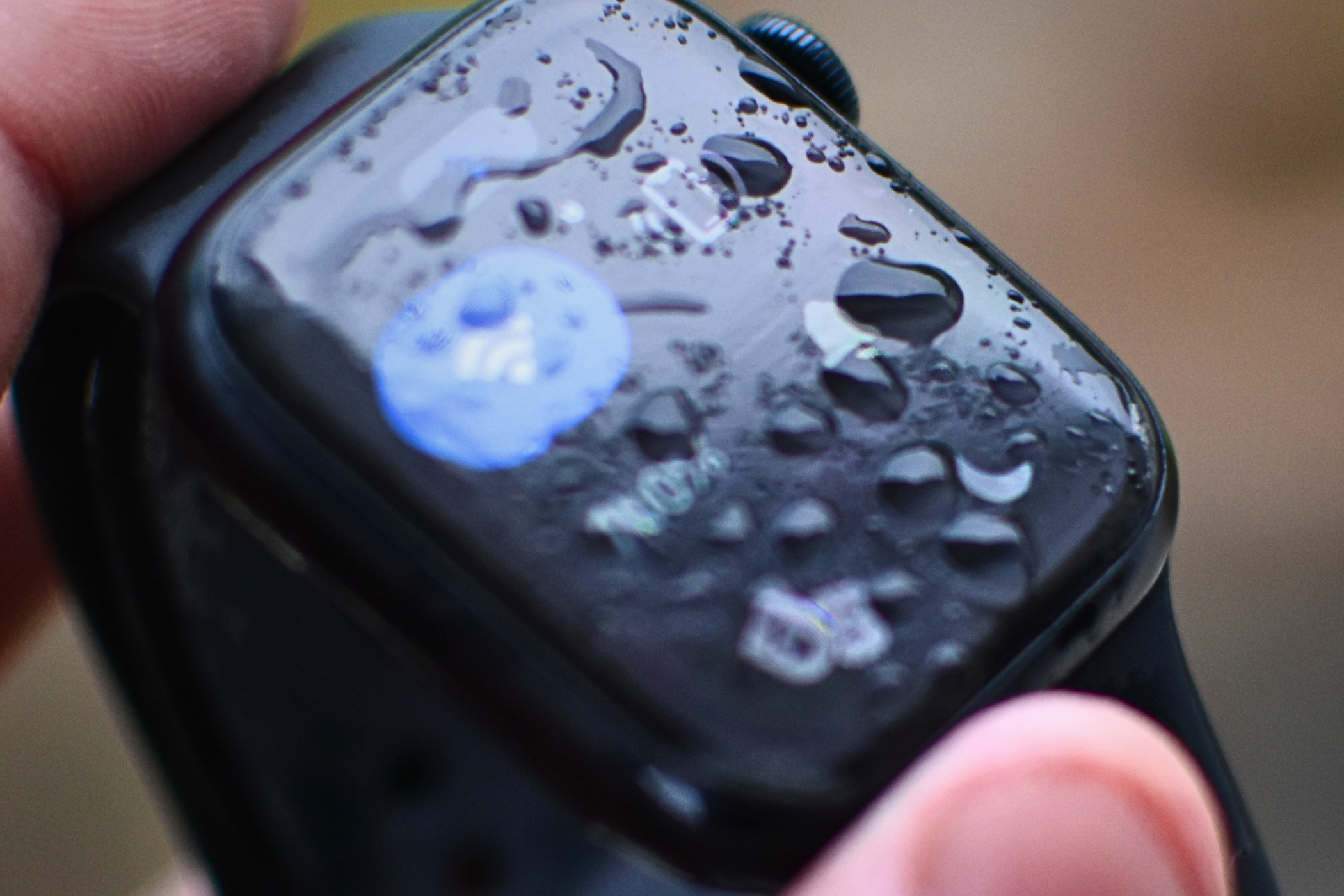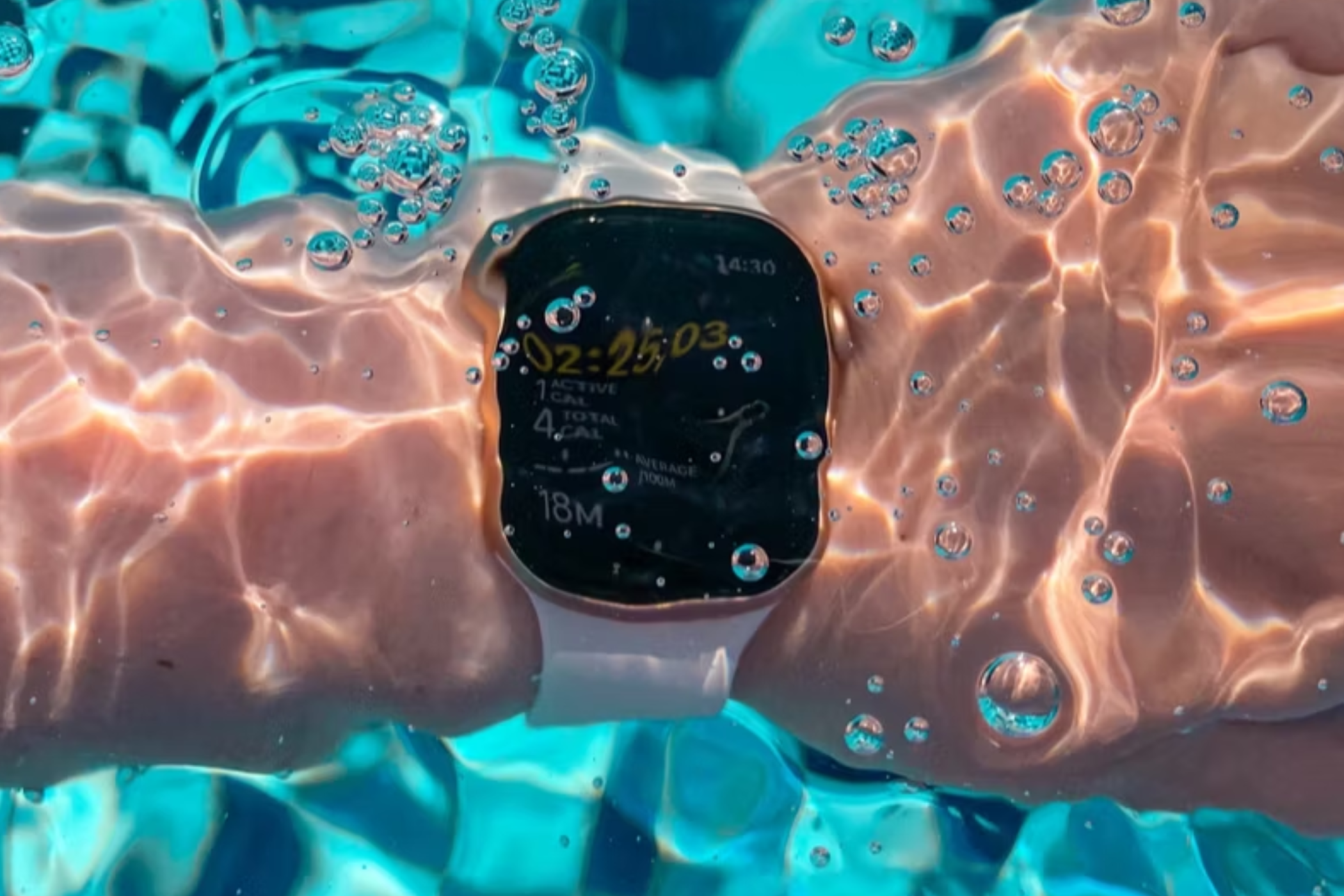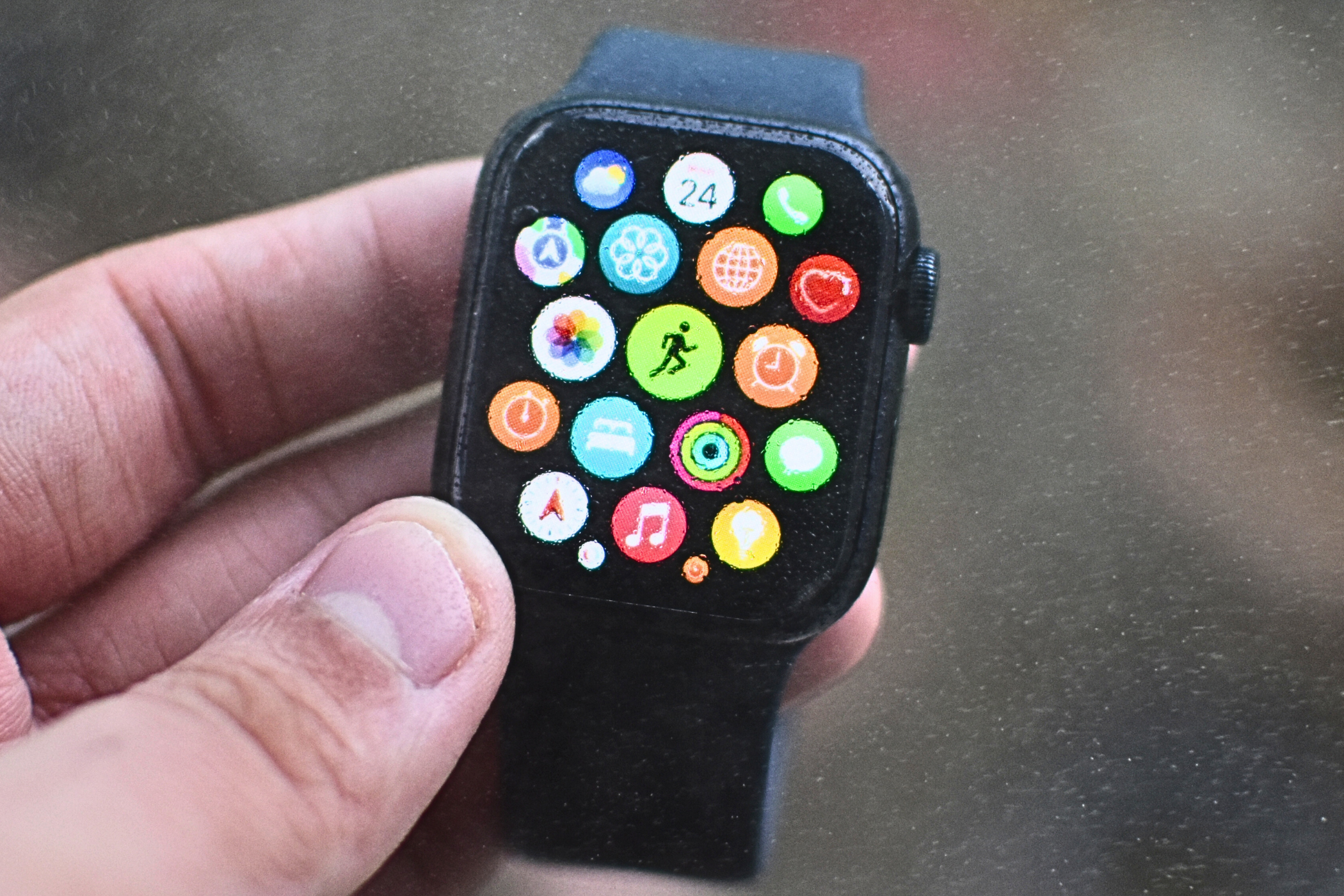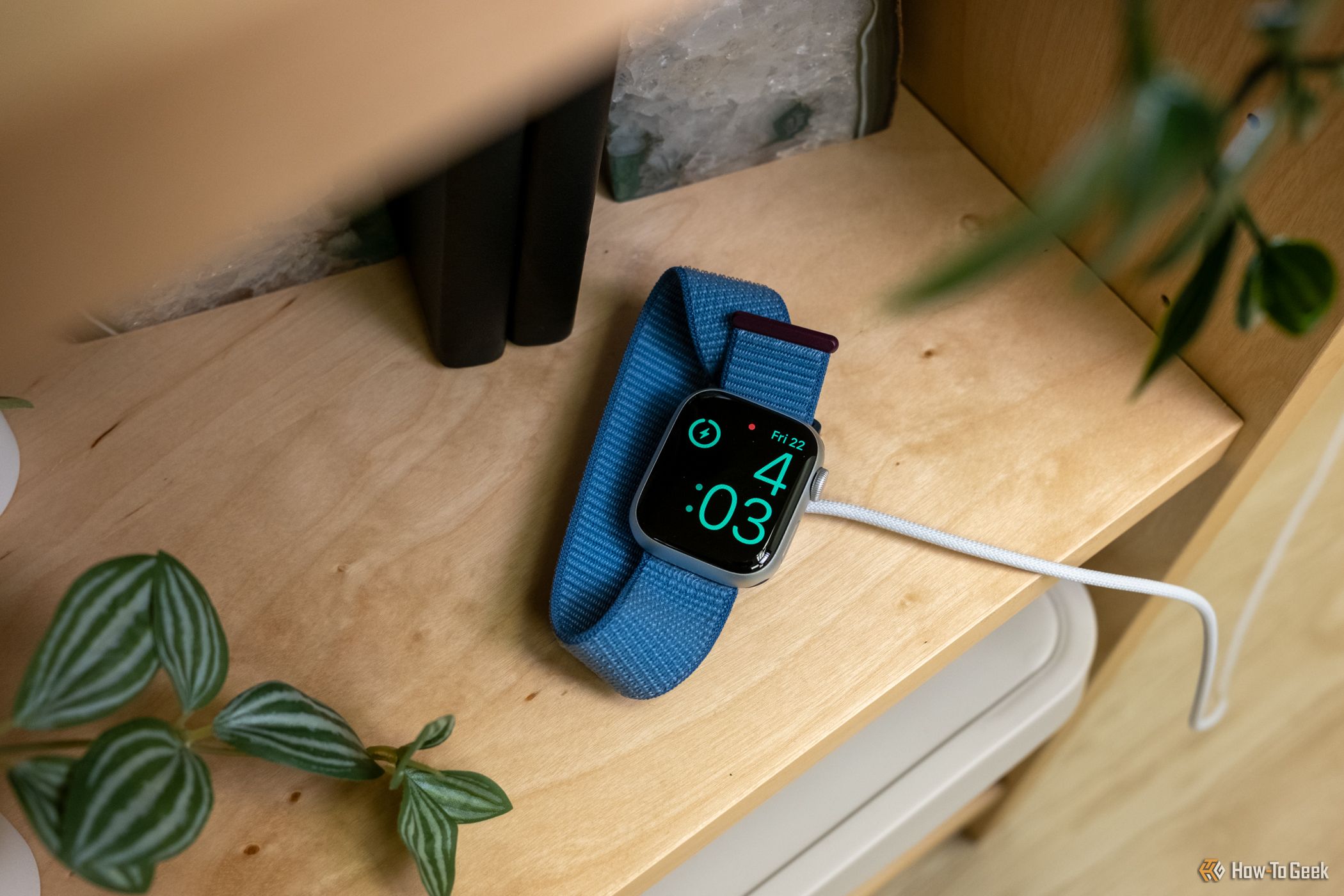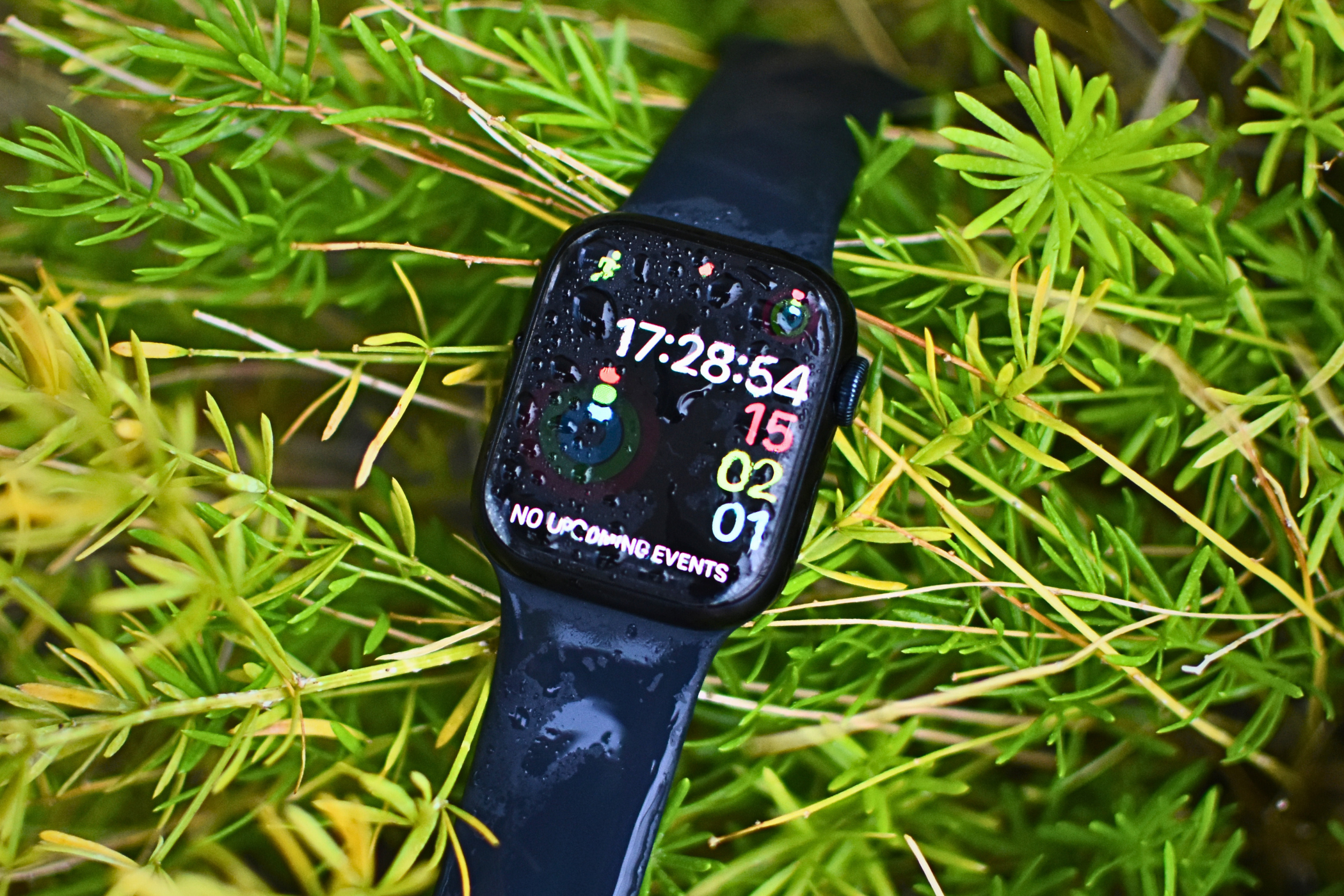Key Takeaways
- The latest Apple Watch models, including the Series 9 and SE (2nd Generation), are rated to be water-resistant for up to 50 meters.
- The Apple Watch Ultra is the only model suitable for high-speed water sports and scuba diving.
- Even though an Apple Watch is water-resistant, one should be cautious about intentional exposure to liquids, as liquid damage isn’t covered under warranty.
All models of Apple Watch have come with a water-resistance rating, from the Apple’s very first smartwatch released in 2015. But does that make your Apple Watch waterproof? Let’s find out.
Your Apple Watch Is Water-Resistant, Not Waterproof
You might have heard that the Apple Watch is waterproof, but that’s not entirely true. In reality, your Apple Watch is water-resistant, implying that it can resist damage by preventing water ingress (to a great extent). So, accidental spills in the sink, splashing at the pool, or showering with your Apple Watch is okay.
But exposing the device to high-pressure water streams, like from a pressurized car wash or during high-speed water sports like surfing, can incur permanent damage. Similarly, the device isn’t immune to hot water or high-temperature steam.
To make sure that all Apple Watch units adhere to identical water resistance levels, the product design team conducts various tests before getting the device approved by a third party. While the first-generation Apple Watch features an IP rating given by the International Electrotechnical Commission (ICE), the newer models are certified by the International Organization for Standardization (ISO).
Long story short, all models are approved for a certain level of water resistance. So let’s discuss how waterproof your Apple Watch really is.
Apple Watch Water Resistance Ratings, Explained
The Apple Watch Series 1 and Watch (1st Generation, also known as Series 0) have an IPX7 rating (under the IEC standard 60529). Technically, this rating should allow a device to be submerged in one meter (around 3 feet) of water, but Apple advises against it. Per the product’s support page, the Series 1 is simply splash-resistant.
The Apple Watch Series 2 and newer models have a water-resistance rating of 50 meters (just over 160 feet). Even so, Apple advises against wearing the device during activities involving high-velocity water or submersion below shallow depth, including scuba diving or waterskiing.
Swimming at the surface (or slightly below), showering with it (without using soap), or washing your hands while wearing the watch shouldn’t be a problem. This applies to the recent models, including the Watch Series 8, Series 9, and the Watch SE (both generations).
The Apple Watch Ultra (both generations) carries a water-resistance rating of 100 meters (almost 330 feet). This is the only model in the lineup that is fit for high-speed water sports like waterskiing. Further, the Ultra also complies with the EN13319 standard, making it suitable for recreational diving up to 40 meters (around 130 feet).
|
Apple Watch Models |
Water Resistance Rating |
|
Apple Watch Series 1 |
IPX7 |
|
Apple Watch (1st Generation) |
IPX7 |
|
Apple Watch Series 2 |
50 meters (ISO 22810:2010) |
|
Apple Watch Series 3 |
50 meters (ISO 22810:2010) |
|
Apple Watch Series 4 |
50 meters (ISO 22810:2010) |
|
Apple Watch Series 5 |
50 meters (ISO 22810:2010) |
|
Apple Watch Series 6 |
50 meters (ISO 22810:2010) |
|
Apple Watch SE (1st Generation) |
50 meters (ISO 22810:2010) |
|
Apple Watch Series 7 |
50 meters (ISO 22810:2010) |
|
Apple Watch Series 8 |
50 meters (ISO 22810:2010) |
|
Apple Watch Ultra 1 |
100 meters (ISO 22810), scuba diving up to 40 meters |
|
Apple Watch SE (2nd Generation) |
50 meters (ISO 22810:2010) |
|
Apple Watch Series 9 |
50 meters (ISO 22810:2010) |
|
Apple Watch Ultra 2 |
100 meters (ISO 22810), scuba diving up to 40 meters |
In my experience with the Apple Watch Series 8, I’ve never had to worry about taking the watch off before washing my hands, showering, or wearing it during workouts (in hot and humid Indian summers). I don’t swim too often, but the few sessions I’ve had with the watch weren’t troublesome.
What Should You Do After Submerging Your Apple Watch?
Although your Apple Watch is water-resistant, there are a few things that you should do every time you submerge it (or drop it) in water. First, wipe the screen and the frame with a clean, lint-free cloth. If you’ve just completed an intense workout session, consider cleaning the insides of the watch that are in direct contact with your skin.
If the speaker sounds muffled, press the side button to access the Control Center, tap Water Lock (the icon with a water droplet), and then hold the Digital Crown to unlock the screen. Doing so will produce a sound to dislodge water trapped in the speaker grill. For those who track their progress using the swimming workout, the device will automatically turn on the Water Lock.
If you’ve dropped something that can leave stains on the Apple Watch Series 2 or later, consider running it under lightly running, warm, fresh water. If you’ve been in the ocean, it’s a good idea to wash off salt water too. Following these practices will help the wearable retain its water resistance.
What An Apple Watch Can Survive (And What It Can’t)
Yes, Apple Watches are water-resistant, and yes, you can comfortably use them in many wet scenarios. But you should know that water resistance isn’t permanent and can diminish with regular wear and use. Further, accidental drops or hard knocks can decrease water resistance. Similarly, submerging the smartwatch for extended durations can cause corrosion, which can cause harm to the internal circuitry.
Exposing all models to soap, perfume, solvent, and detergent, and using the non-Ultra models in high-velocity water sports can quicken the aging process or, even worse, damage the components like the microphone or the speaker. Apple also lists high diving and sauna (above 55°C) in its list of activities to avoid while wearing the Apple Watch.
Standard Apple Watch Warranty Doesn’t Cover Any Water Damage
It’s a tad disappointing, but the limited one-year warranty on an Apple Watch doesn’t cover any damage incurred due to ingress of water. The wearable may be designed to survive at 50 or 100 meters (depending on your model) any faults that service officials narrow down to water damage will come out of your pocket. Things aren’t the same for AppleCare+ subscribers who only have to pay a fixed cost to get their Apple Watch repaired.
Speaking of repairs, you should remember that getting the Apple Watch serviced at a third-party repair shop could not only end the warranty but can also make your watch more prone to water damage. The device relies on water-resistance seals around the enclosure. While the authorized service centers usually have the original parts to replace it (retaining the water resistance), a third-party technician might not have the right equipment or spare parts.
Things To Know About Water Resistance
Notice how Apple’s advisory for maximum submersion is lower than the maximum water resistance level. This ensures that users don’t expose the device to conditions it can’t handle, which could lead to irreparable damage.
While the Apple Watch Series 2 and newer are rated to around 150 feet, that doesn’t mean that you can safely use them at that depth. Rather, the seals have been tested at a pressure equivalent to 150 feet (five atmospheres) in static water. However, it’s easy to exceed that pressure even in shallow water if you fall over while waterskiing or wipe out while surfing.
It’s worth noting that while the watch chassis is sealed shut, the bands, especially the stainless steel and leather ones, aren’t water-resistant. They could show signs of damage upon regular exposure to water, which also means they are not as good as withstanding sweat or rain.
Below is the full list of Apple Watch bands that aren’t water-resistant:
- Magnetic Link
- Leather Link
- Link Bracelet
- Modern Buckle (with leather)
- Modern Buckle (with FineWoven)
- Hermès leather and knit bands
To get to know your Apple Watch better, consider checking out our favorite Apple Watch features you should be using and the 10 most common Apple Watch issues (and their fixes).


